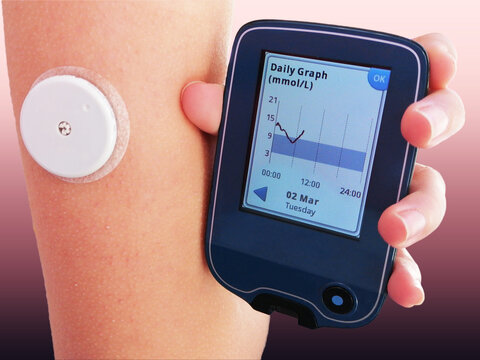Managing blood sugar levels effectively is crucial for people with diabetes, and having reliable tools makes a big difference.
Among these tools, the most accurate continuous glucose monitor (CGM) stands out as a game-changer. It helps users keep a close eye on their glucose levels in real-time, allowing for better decision-making and improved health outcomes.
Choosing the right CGM can feel overwhelming because many options exist on the market, each with unique features and accuracy levels.
This guide will break down the key details you need to know about the most accurate continuous glucose monitor options available today.
Why Accuracy Matters in Continuous Glucose Monitoring
Accuracy in glucose monitoring is vital because it directly impacts how well someone can manage their diabetes.
An accurate CGM provides precise readings that reflect the true blood glucose levels, helping to avoid dangerous highs or lows. With more accurate data, users can adjust insulin, diet, and activity more confidently.
Less accurate devices might show misleading numbers, leading to incorrect treatment decisions. Therefore, the most accurate continuous glucose monitor is not just a convenience but a necessity for safety and effective diabetes management.
Click here to learn more about the most affordable continuous glucose monitor.
Top Features to Look for in the Most Accurate Continuous Glucose Monitor
- Sensor accuracy: The ability to give precise glucose readings.
- Real-time data: Continuous updates help track trends and fluctuations.
- Ease of use: Simple application and maintenance improve adherence.
- Alerts: Notifications for high or low glucose levels provide timely warnings.
- Compatibility: Works well with smartphones and insulin pumps.
- Sensor lifespan: Longer-lasting sensors reduce replacements and costs.
Click here to learn more about the 12 health benefits of cloves and milk tea.
Comparing the Most Accurate Continuous Glucose Monitors
Below is a comparison table highlighting popular CGM models known for their accuracy and features:
| CGM Model | Accuracy (MARD*) | Sensor Life | Alerts | Connectivity | Additional Features |
| Dexcom G6 | 9.0% | 10 days | High/Low glucose | Smartphone, Pumps | No fingerstick calibration |
| Abbott FreeStyle Libre 3 | 9.2% | 14 days | High/Low glucose | Smartphone | Smaller sensor, on-demand scanning |
| Medtronic Guardian Connect | 9.6% | 7 days | Predictive alerts | Smartphone, Pumps | Integration with insulin pumps |
| Eversense XL | 8.5% | 90 days (implant) | Vibration alerts | Smartphone | Implantable sensor, longest sensor life |
*MARD = Mean Absolute Relative Difference, lower % means higher accuracy
Click here to learn more about how cell phones affect our health.
Why Dexcom G6 Often Tops Accuracy Charts
Many experts and users consider the Dexcom G6 the most accurate continuous glucose monitor available today. Its MARD of around 9.0% means it closely matches laboratory glucose readings.
The device requires no fingerstick calibration, which adds convenience and reduces pain. Users benefit from real-time alerts that notify them of blood sugar trends and potential emergencies.
The Dexcom G6 sensor lasts 10 days and is compatible with many insulin pumps and smartphones, making it a versatile choice.
Click here to learn more about the best ways to reduce unhealthy fats in my diet.
FreeStyle Libre 3: A Compact, Accurate Alternative
Abbott’s FreeStyle Libre 3 has made waves by combining compact size with impressive accuracy. It offers continuous glucose readings with an MARD of 9.2%, very close to the Dexcom G6.
One unique feature is its ability to work with on-demand scanning, meaning users can check their glucose by simply scanning the sensor with a phone.
The sensor lasts 14 days, the longest for a non-implantable CGM, which makes it more cost-effective over time.
Click here to learn more about the benefits of dark chocolate for health.
Medtronic Guardian Connect and Eversense XL
Medtronic’s Guardian Connect system is also well-regarded, particularly for its predictive alerts, which help users anticipate dangerous glucose changes before they happen. Its sensor lasts seven days, slightly shorter than others.
Eversense XL stands out with its implantable sensor, lasting up to 90 days. It’s the most accurate with a MARD of 8.5%, but it requires a minor procedure to place and remove the sensor.
Click here to learn more about the health benefits of cane sugar.
Choosing the Most Accurate Continuous Glucose Monitor for You
Accuracy is essential, but it’s important to balance it with lifestyle needs. Some people prefer longer sensor life to reduce replacements.
Others want integration with insulin pumps or seamless smartphone connectivity. Consider these personal factors alongside the accuracy to pick the best CGM for your health and comfort.
Click here to learn more about the 10 biggest health risks many may face in the new year.
A Word from GetMe Treated
Choosing the most accurate continuous glucose monitor means finding the right balance between precision, convenience, and features that fit your lifestyle.
With technology advancing quickly, users now have better options than ever to help manage diabetes effectively and live healthier lives.
Click here to learn more about what makes a burger healthy.
FAQs About the Most Accurate Continuous Glucose Monitor
What makes a CGM accurate?
Accuracy is measured by how close the sensor’s readings are to lab blood glucose levels, using MARD (lower is better).
How often do CGM sensors need replacing?
Depending on the model, sensors last between 7 and 90 days.
Can I dose insulin using only a CGM?
Some CGMs are accurate enough for dosing, but check with your doctor first.
Is using a CGM painful?
Insertion may cause mild discomfort, but wearing it is usually painless.
Do CGMs alert for high or low glucose?
Yes, most provide customizable alerts for glucose highs and lows.
How is an implantable CGM different?
It stays under the skin longer (up to 90 days) and uses vibrations for alerts, but requires minor surgery.

